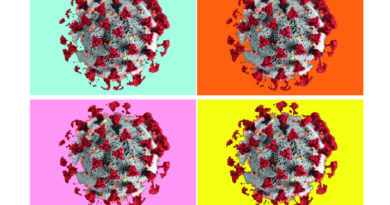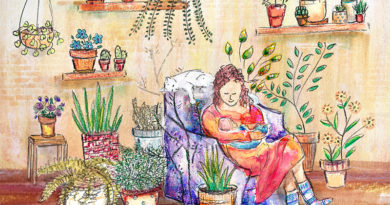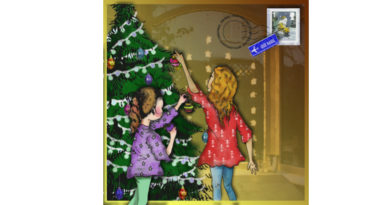Caring for an Infant with Diarrhoea and Vomiting
Your toddler is not well. He is throwing up and has loose watery stool (poo). He normally goes to day care a few times a week and you’ve heard that other children have been unwell, too. This is a situation many parents/carers have experienced before.
Gastroenteritis (gut infection, stomach bug, stomach flu, or an upset tummy) is very common in small children. It spreads easily and symptoms start quickly. All of a sudden, your child has diarrhoea (loose, watery stool at least three times in a 24-hour period) and there may (or may not) be vomiting too. Your child could also have a fever, a headache, and tummy pains.
When to see your child’s paediatrician
Reasons you should see your child’s paediatrician when your child has diarrhoea and vomiting include when your child…
- is passing less urine (e.g., fewer wet nappies – though this can be difficult to tell when mixed in with watery stool).
- produces fewer tears when crying.
- is less energetic and weaker than usual.
- is getting drowsy.
- is not managing to keep any fluids down.
- is usually breast-fed, but doesn’t want to nurse.
- has a high fever that is not coming down/not responding to paracetamol.
- has tongue and lips that look dry.
- has a rash.
- has blood or mucus in his/her vomit or stool.
- has green vomit (this suggests there is bile in the vomit. Note: bile is not yellow).
- has developed gut problems since you returned from abroad.
- is not improving or is getting worse, despite what you have been trying at home (higher risk of getting badly dehydrated if more than five watery loose stools passed in 24 hours).
- is a baby under one year (under six months in particular).
- is a low weight anyway (perhaps born light or small).
If your child falls into any of the situations above, he or she may need extra help with fluid intake through a tube into the stomach via the nose, or could need intravenous fluids (fluids into a vein), or may need hospital investigations, admission, and treatment.
If your child doesn’t fall into any of the above, you may still need to see his paediatrician for advice on fluid replacement and whether other treatments are needed for his recovery.
Fluid Replacement
The key to caring for any child with diarrhoea and vomiting is keeping up fluid intake. A small child can lose a lot of body fluid in vomit and stool, and can become dehydrated quickly. This is particularly the case with babies younger than six months old – they don’t need to lose much of their total body fluid before they become very sick.
Keep breastfeeding (if your child breastfeeds). Your baby may want to nurse more than usual. Make sure you keep your own fluid intake up, too.
Fluid replacement means replacing the water lost from the body plus the body’s sugars and electrolytes (salts) too. If your child can manage, she should drink her usual drinks plus extra. Avoid fizzy drinks and fruit juices – the sugar can make diarrhoea worse. Rehydration drinks made up from sachets bought in your local pharmacy (known as ORT – oral rehydration therapy) provide an excellent balance of the water, sugars, and salts needed.
Products you can buy (or your paediatrician may recommend) include Normolytoral and Oralpädon. They are normally made up with water, though unsweetened herbal tea can be used. If children refuse to drink these rehydration solutions, mix them with a little flat Coca Cola to improve the taste (or freeze into small ice lollies). Give the oral rehydration in small quantities using a spoon or a plastic syringe (you can buy these in pharmacies). A spoonful or so every few minutes is ideal. If your child vomits, wait 10 minutes before trying again. If after a few hours or so of coping well with sipping small quantities of oral replacement drinks, you can try your child on her usual milk again (see next section).
What about milk?
Once your child is coping well with taking oral rehydration solution, you can start back onto the milk they usually drink (even if your child still has diarrhoea). If your child is bottle fed with formula, you should start back on this at full strength. If your child is continuing to vomit, or if the diarrhoea seems a lot worse after reintroducing milk, your paediatrician will be able to advise you further. In some cases, your paediatrician may suggest stopping all cow’s milk and all formula, and giving your child a lactose-free formula instead such as Aptamil HN 25.
Gastroenteritis can trigger temporary intolerance to cow’s milk. This is thought to be due to gut infection damaging the lining of the intestine so not enough lactase (an enzyme needed to digest milk properly) is produced. When the gut recovers, it is able to produce lactase again, and your child should be able to drink normal milk again.
Eating
Once your child is drinking fluids, try him on solid food. Depending on the severity of the vomiting/diarrhoea, some paediatricians suggest avoiding food for the first 12 hours. However, be guided here by your child’s wants. Many children can cope well with small amounts of food, and indeed will demand to eat.
Good foods to introduce once your child is ready include a simple carrot soup, ripe banana, plain mashed potato, and plain rice. Useful food for small children ready to eat again include Salzstängeli (salty pretzel sticks), Zwieback (dry rusk crackers) and breadsticks. Avoid foods with a high fat or sugar content or fried foods until your child tolerates bland foods first. Some children will cope with their usual solid food; others may need a slower introduction.
Other treatments when your child has vomiting and diarrhoea
Medications that slow down or stop diarrhoea in adults (such as Loperamid) should not be used in young children.
If your child is vomiting a lot, there is a medicine called Itinerol B6 which helps limit the number of vomits. Your paediatrician may prescribe your child a single one-off suppository. Note: Itinerol B6 is available for adults and you may have come across it if you suffered from nausea/vomiting in pregnancy, but the formulation is different for children.
Probiotics are increasingly popular. They are live microorganisms which have a role in restoring the balance of bacteria that live in our intestines after there has been disruption (such as a bout of gastroenteritis). A large range of probiotics is available. They are thought to help reduce how long an episode of diarrhoea lasts and how severe the episode is. Products available in pharmacies include Bioflorin, Perenterol and Lactoferment.
It is worth making sure you have some a barrier cream for sore bottoms – frequent loose stool can irritate the skin round the bottom. Apply barrier cream each time you clean and change your child when they have diarrhoea.
Vaccines
It is impossible to avoid gastroenteritis completely, but washing hands properly helps. Most episodes of diarrhoea and vomiting are caused by viruses. In the under-fives, rotavirus is a very common cause, but other viruses cause similar symptoms. Many countries now offer a vaccine against rotavirus as part of their childhood immunisation programmes (including the U.K., the U.S., and Australia). The rotavirus vaccine is not currently part of the routine immunisation schedule in Switzerland, but you can still get it for your baby; however, it is not reimbursed by health insurance.
Getting better
In general, gastroenteritis will improve in less than a week, but it can take up to ten days. Most children with diarrhoea and vomiting will get better being cared for at home, without any paediatrician or hospital intervention. Vomiting and fever (if they have any) usually settles first, but the loose stool can go on for several days after the vomiting has stopped.
Even when your child is better, their stool may remain slightly loose for longer than a couple of weeks.
A child should not return to day care for 48 hours after their last episode of vomiting or diarrhoea, and they should avoid public swimming pools for 2 weeks after their last episode of diarrhoea.
By Dr. Jahura Hossain
Born and brought up in London, Jahura is a U.K.-qualified doctor. She has worked in hospitals, general practice, public health, prison medicine, and the pharmaceutical industry.
Illustration by Laura Munteanu
Laura has studied Journalism and Advertising, and has been working as a journalist and an illustrator. She has been illustrating for magazines, websites, charity and diverse campaigns. She lives in Zurich with her husband and eight-year-old daughter.
© Copyright. Jahura Hossain. 2016. All rights reserved. No part of this article may be reproduced without the express consent of the author.




